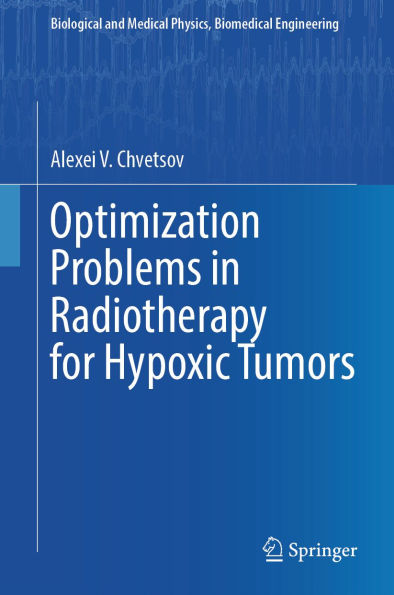This book highlights the mathematical aspects of treatment outcomes analysis and dose optimization in radiotherapy for heterogeneous hypoxic tumors. Hypoxia is a major factor of cancer resistance to radiotherapy treatment and is present in most tumors encountered in humans. The author tried to present a systematic consideration of radiotherapy for hypoxic tumors, but the emphasis was put on mathematical content of the problems. The book contains new approaches to the concepts of tumor control probability, equivalent uniform dose and radiotherapy dose optimization for hypoxic tumors developed by the author. Significant attention in this book is paid to comparison of models with measured and clinical data; therefore, the reduction of model parameters to overcome overfitting (model parsimony) was followed as much as possible.
This book highlights the mathematical aspects of treatment outcomes analysis and dose optimization in radiotherapy for heterogeneous hypoxic tumors. Hypoxia is a major factor of cancer resistance to radiotherapy treatment and is present in most tumors encountered in humans. The author tried to present a systematic consideration of radiotherapy for hypoxic tumors, but the emphasis was put on mathematical content of the problems. The book contains new approaches to the concepts of tumor control probability, equivalent uniform dose and radiotherapy dose optimization for hypoxic tumors developed by the author. Significant attention in this book is paid to comparison of models with measured and clinical data; therefore, the reduction of model parameters to overcome overfitting (model parsimony) was followed as much as possible.

Optimization Problems in Radiotherapy for Hypoxic Tumors

Optimization Problems in Radiotherapy for Hypoxic Tumors

Product Details
| ISBN-13: | 9789819670017 |
|---|---|
| Publisher: | Springer-Verlag New York, LLC |
| Publication date: | 06/24/2025 |
| Series: | Biological and Medical Physics, Biomedical Engineering |
| Sold by: | Barnes & Noble |
| Format: | eBook |
| File size: | 13 MB |
| Note: | This product may take a few minutes to download. |
